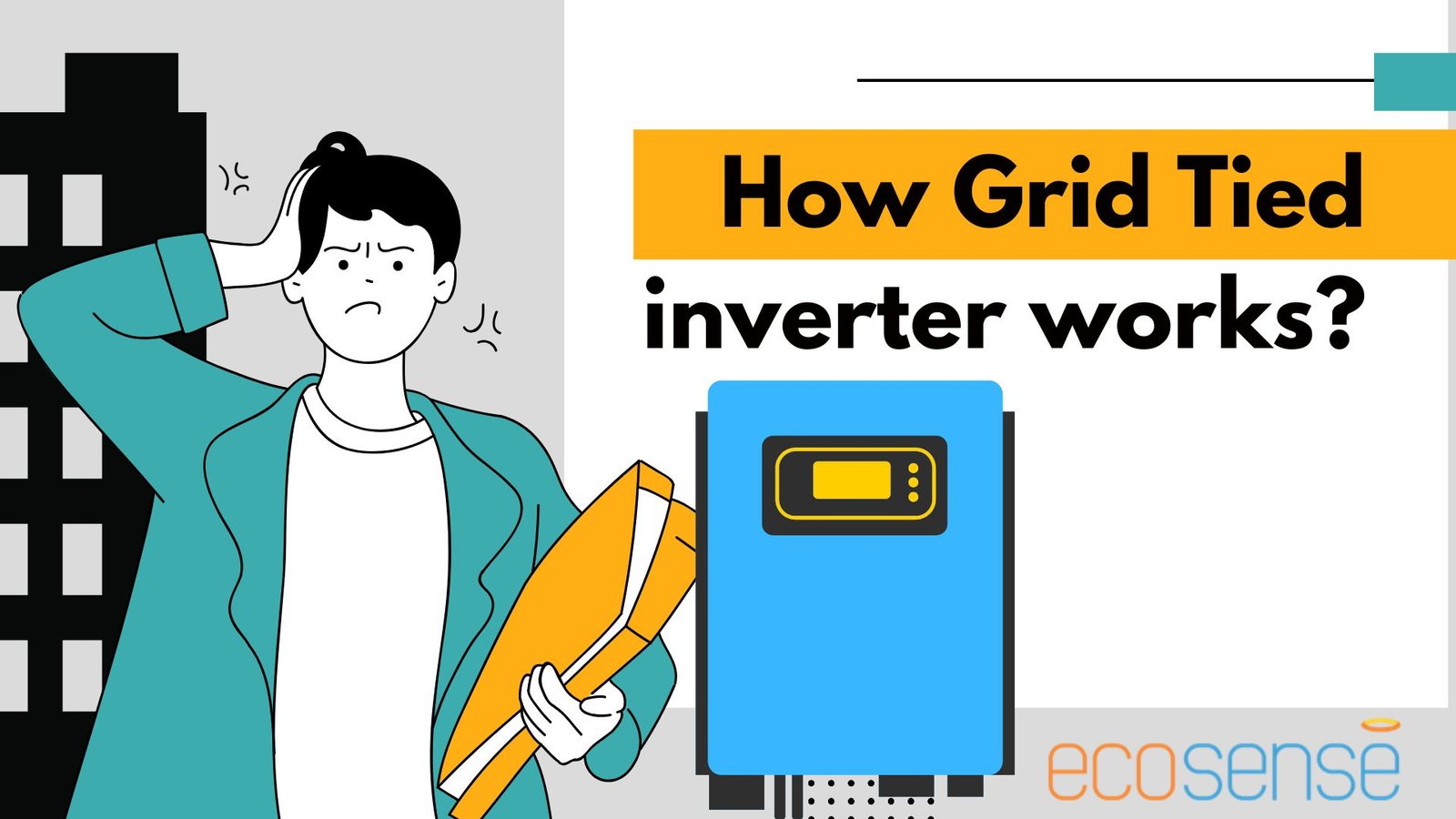How Grid-Tied inverter works?
How a Grid-Tied Inverter Works: The Bridge Between Renewables and the Grid
Renewable energy sources such as solar photovoltaic (PV) and wind turbines generate direct current (DC) electricity, while most utility grids and end-user loads operate on alternating current (AC). The device that enables seamless integration between these two worlds is the grid-tied inverter.
Far beyond simple DC–AC conversion, a grid-tied inverter is a sophisticated power electronic system that ensures synchronization with the grid, maximizes power extraction from renewables, and maintains system stability and safety. Understanding its operation is essential for students and researchers in power electronics, renewable energy, and microgrid systems.
Basic Working Principle
The grid-tied inverter takes in DC power from a renewable source, conditions it through intermediate stages, and outputs synchronized AC that matches the voltage, frequency, and phase angle of the utility grid.
Simplified Workflow:
- Renewable DC input (Solar PV/Wind rectified output).
- DC-Link Stage – Stabilizes input.
- PWM Switching Stage – Uses MOSFETs/IGBTs to create AC waveforms.
- Filtering – LC filters remove harmonics.
- Synchronization (PLL) – Aligns inverter output with grid.
- Protection Circuits – Ensure safety and compliance.
- AC power injected into the grid.
Power Electronic Switching
At the heart of the inverter are semiconductor devices, most commonly MOSFETs (for lower voltage systems) and IGBTs (for higher voltage/current applications). These switches operate at high frequencies (kHz range) to generate Pulse Width Modulated (PWM) signals that approximate a sinusoidal AC waveform.
The PWM technique is critical as it allows precise control of output voltage, minimizes harmonic distortion, and enables advanced control strategies.
DC-Link and Filtering
The DC-link capacitor plays a stabilizing role by smoothing fluctuations from variable renewable inputs. After the switching stage, the inverter output contains unwanted high-frequency components.
An LC filter is used to eliminate harmonics, resulting in a clean, sinusoidal output that is compatible with grid standards.
| Stage | Functions | Key Components |
| DC Link Capacitor | Smooths DC input | Capacitors (µF to mF range) |
| LC Filter | Removes high-frequency harmonics | Inductor+Capacitor |
Grid Synchronization (PLL)
To safely deliver power to the grid, the inverter must synchronize its output with the grid’s:
- Voltage
- Frequency (50 Hz / 60 Hz)
- Phase angle
This is achieved using a Phase-Locked Loop (PLL) system, which continuously monitors grid conditions and adjusts inverter control signals accordingly. If synchronization is lost, severe consequences like circulating currents, grid instability, or equipment damage can occur.
Control Strategies
Grid-tied inverters rely on digital controllers (DSPs, FPGAs, or microcontrollers) to implement real-time control algorithms.
| Control Strategy | Description | Application |
| Current Control | Controls inverter current injected into the grid. | Standard grid-tied operation. |
| Voltage Control | Inverter sets voltage and frequency (islanded/microgrid mode). | Standalone or hybrid microgrids. |
| Hybrid Control | Switches between current and voltage modes depending on conditions | Advanced microgrids with storage. |
Maximum Power Point Tracking (MPPT)
For solar PV systems, power generation varies with irradiance and temperature. MPPT algorithms are embedded in the inverter to ensure the PV operates at its maximum power point.
| MPPT Algorithms | Working Principle | Pros | Cons |
| Perturb & Observe | Incrementally adjusts voltage/current and observes power output. | Simple, widely used. | Oscillations around MPP. |
| Incremental Conductance | Compares instantaneous conductance with incremental conductance. | Accurate, fast response. | More complex implementation. |
| Fuzzy/AI-based | Uses intelligent models for tracking. | High efficiency, adaptive. | Computationally intensive |
Protection and Safety Mechanisms
Compliance with grid codes (IEEE 1547, IEC 61727) requires multiple protective features:
- Anti-Islanding Protection → Disconnects inverter during grid outages.
- Over/Under Voltage Protection → Prevents unsafe grid injection.
- Overcurrent & Short Circuit Protection → Safeguards system components.
- Ground Fault Detection → Ensures user and equipment safety.
Applications in Microgrids
In microgrids, inverters serve as power managers, enabling bidirectional flows between solar PV, batteries, and the grid. They:
- Balance renewable variability.
- Enable energy storage integration.
- Provide voltage and frequency support in islanded mode.
Learning Through Hands-On Labs
While textbooks explain concepts like PWM, MPPT, and PLL, students only truly grasp them when they can observe real signals and behaviors on lab platforms.
In controlled environments, learners can:
- Analyze PWM signals on oscilloscopes.
- Test MPPT performance under variable simulated irradiance.
- Measure Total Harmonic Distortion (THD).
- Simulate islanding to test anti-islanding responses.
Ecosense Renewable Energy Lab Platforms
Ecosense provides programmable inverter modules within its Renewable Energy and Microgrid Labs. These labs allow universities to:
- Conduct DC–AC conversion and grid synchronization experiments.
- Explore MPPT algorithms in real-time.
- Integrate solar, wind, and storage for microgrid demonstrations.
- Log and analyze data using IoT-enabled monitoring.
This hands-on exposure equips students with skills directly applicable to renewable energy industries and research.
The grid-tied inverter is not just a conversion device but a critical enabler of renewable energy integration. Its ability to transform variable DC into synchronized AC, maximize efficiency through MPPT, and ensure grid stability through advanced control strategies makes it the backbone of modern clean energy systems.
For academia, teaching inverter operation through hands-on lab experiments is vital to prepare engineers capable of driving the energy transition. Ecosense’s modular labs provide exactly that bridge between theory and practice, ensuring students are not just learners, but innovators in the clean energy future.

